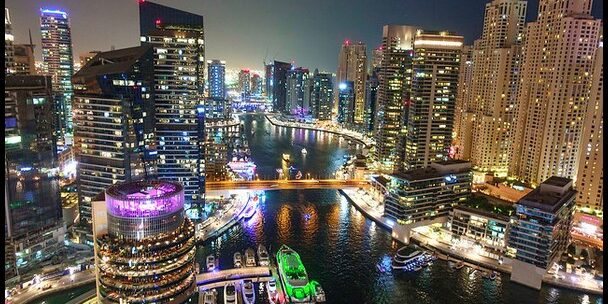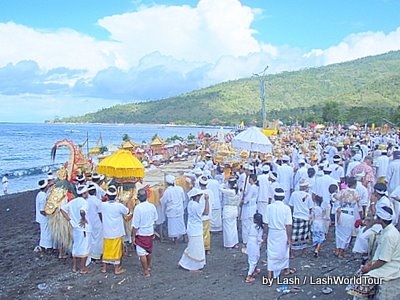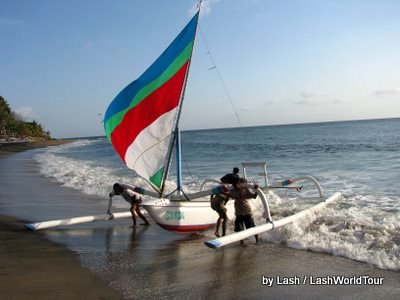LIFE OF A MACKEREL FISHERMAN IN AMED, BALI
Amed is a fairly remote, arid coastal region of poor fishing/farming communities along Bali’s far northeast coast. The entire area is collectively referred to as Amed but, in fact, consists of a series of small beach-side fishing villages, each with it’s own name and identity. There’s Amed, Jemeluk, Bunutan, Lipah, LeeAn, Salang and others.
These communities are separated by hills stretching along the coast and connected by a single coastal road that winds up over one headland, down into a small beach-fringed cove, up over the next headland and down into the next village.
Aside from low-key tourism, which has been developing gradually since the mid-80s (boutique resorts, dive shops and scattered shops), Amed still revolves around fishing and farming. Local families live down on the coast and up along Amed’s scrubby hillsides in small primitive shacks and houses. They are astoundingly poor. In fact, aside from tourism, the entire Amed region is quite poverty stricken.
Poverty seems to be the result of an unusually arid climate, a very short growing season and an equally short fishing season.
Mackerel fishing high season lasts roughly 3 months, from October to December. During those months each fisherman can catch 100-300 mackerel per day.
The remaining 9 months of the year, fishing catches are extremely sporadic. One day can bring 30 fish, the next day merely 1-2 fish. Each day’s catch also varies greatly for each fisherman. One man may catch 2, another 20.
There’s a lot of competition for mackerel since each of 10+ villages has 100-300 fishermen. That equates to 1000-3000 fishermen trying to catch mackerel, twice a day. Who gets lucky and who doesn’t is the luck of the draw.
Balinese fishing boats, ‘jukung’, are colorful wooden outriggers with ‘arms’ on either side for stability. These single-masted sailboats have triangular sails made of heavy, colorful plastic, each with a different patterned sail, making it easy to identify individual boats.
Hulls are hollowed-out trees, deep and extremely narrow, just wide enough to seat one slim person. Arms are constructed from bamboo and wood then slashed together with ropes.
Jukung hulls are painted white with colorful accents in green, red, blue, and yellow. Each jukung has its name painted on both sides of the bow. Traditional jukung also have eyes molded on their bow and two long wood poles jutting forward to form a ‘barracuda mouth’. Nowadays, very few jukung sport the charming eyes and barracuda mouths.
A local fisherman explained to me that Lipah beach no longer has enough room for the long ‘barracuda mouths’: too many boats. The mouths repeatedly get broken as boats shift around on the beach during heavy winds or seas.
A few local men still build jukung, which takes about 2-3 weeks. I’m told one boat costs about 3 million rp (about $330 US) to build.
Mackerel fishing starts at about 5:00 am, with a serious physical regime. Since jukung are parked high on the beach, fishermen have to carry them in and out of the sea.
It takes 4-8 men to carry one jukung. First, several men lift a boat and carry it to the water’s edge. They set it down then push it off. One fisherman quickly jumps aboard and sets to unfurling his triangular sail. He sometimes needs to paddle carefully beyond breaking waves.
The distance from parking spot to sea isn’t far, but the mens’ superbly muscled, lean bodies testify to the heavy strain of carrying the solid wood boats. Each jukung has an engine for windless days, though the engines are usually stored together in a simple thatched pavilion and only put on board when needed.
| fishermen’s wives awaiting their return |
From the coast, fishermen sail out about 1- 1 1/2 hours then return, arriving back between 7 to 7:30 am. Meanwhile, a crowd of locals gathers at the beach, awaiting their return.
Fishermen’s wives wait with big plastic buckets to carry back the day’s catch. Fishermen who haven’t gone out wait, hoping to buy fish from their friends and to help carry jukung out of the sea. It’s quite a tight-knit community, with all the fishermen helping each other out.
As each boat returns, men wander over to check out the morning’s catch and to help lift jukung past the tide line. Depending on sea conditions, that could be a leisurely lift or a hurried, urgent removal from strong waves. Generally, just two men can manage to haul the jukung up past the tide line. From there, 4-8 men are needed to return the jukung to its ‘parking place’ high up on the beach.
| fisherman rolling up sail |
Once the jukung return, things wrap up pretty quickly. Fishermen quickly fold up their sails and tie them down. Wives have already reached their husbands’ boats and have begun loading mackerel into buckets.
Friends who’ve come to buy fish quickly pick through the catch, make their selection, and pay. Fishermen methodically carry each jukung up to its parking place. Once they’re parked, the beach is quickly deserted. Suddenly, the colorful jukung are back in place, the beach empty.
| Amed beach with sacred Mt. Agung watching over the coast |
The entire process is usually repeated again in late afternoons from about 4 to 6:30 pm. Most fishermen generally go out twice/day, but each man chooses whether to go out once, twice, or not at. He decides based on what he deems mackerel catching prospects to be, on sea and wind conditions, how badly he needs money, and how tired he is.
As for the day’s catch, if any, first a few fish are kept to feed the family. Any excess is sold to local friends, sold roadside to passersby, or sold to fish markets (for big catches) in Amlapura city, about one hour from Amed.
How much money can Amed fishermen make for their efforts?
In the long, 9-month off-season period, each fish will bring about 2000 rp (about 9000 rp = $1 US), about 25 cents. During high season, this price should bring in a hefty salary for a Balinese: 2000 rp x 100 fish = 200,000 rp/day (about $20 US) Up to 300 fish/day could bring in 600,000 rp/day. In one month, that would render an Amed fisherman practically rich!
Quite unfortunately, in high season fish prices drop to a paltry 300 rp/fish. That 100 fish/day catch now brings in only 30,000 rp ($3 US), just a fraction of it’s low-season value.
Fishermen supplement their income by farming the scrubby Amed hillsides. They keep farm animals, including pigs, cows and chickens, which they sell and/or eat.
Amed’s very short growing season coincides with Bali’s rainy season, roughly Dec. through Feb. During that time they can only grow corn, peanuts and beans, all of which they eat or sell. Other vegetables, rice, tofu and other foods they must buy at market.
Some fishermen are able to earn money with their jukung via tourism. Dive shops hire them for boat diving. Fishermen also take tourists out on their usual fishing trips and on snorkeling adventures.
They sometimes porter travelers over to Lombok’s Gili islands, a 2-3 hour trip on open seas. Local women often earn money by giving excellent massages to tourists or by portering scuba diving tanks.
| sea full of jukung at sunrise |
For observers like myself, Amed’s daily fishing life is a charming attraction. I often marvel at a sea full of colorful triangular sails drifting on the vast Bali Sea at sunrise and sunset, watching them slowly grow bigger and bigger as they return to shore.
It’s equally intriguing to watch the return of the jukung, packing up of sails, carrying of boats, gathering and selling/buying of the catch, and women carrying buckets on their heads.
| Lipah beach, packed with jukung from end to end |
When jukung are not out to sea, they add colorful ‘decoration’ to Amed’s gray-sand beaches. Jukung are so numerous that most beaches are packed with boats from one end of the bay to the other.
Lipah beach, my former ‘home’ in Amed, has about 100 jukung parked along its 500 M/300 yd beach. Other villages have about 100-300 jukung each, I’m told.
While Amed’s vibrant flurry of daily fishing activities adds a charming touch to any Amed vacation, it’s disheartening to learn the dire reality of the fishermen’s daily lives. Each time to visit I hope their situation has been improved by the low-key tourism slowly infiltrating their homeland.
Arak and Tuak, Bali’s Locally Brewed ‘Moonshine’
Salt Making in Amed
Guide to Scuba Diving in Bali
Balinese Hindu Ceremonies
Gamelan: Bali’s Percussion Orchestras
What kind of fishing do you enjoy?
What’s your favorite place to fish?











 Hi! I'm Lash, an American nomadic world traveler who's been traveling solo since 1998. I’m passionate about traveling the world nomadically and then sharing it all with you. I hope to inspire you to travel the world, to entertain you with tales from the road, and to help you reach your travel dreams. Welcome!
Hi! I'm Lash, an American nomadic world traveler who's been traveling solo since 1998. I’m passionate about traveling the world nomadically and then sharing it all with you. I hope to inspire you to travel the world, to entertain you with tales from the road, and to help you reach your travel dreams. Welcome! 




5 pings
10 FREE THINGS TO DO IN BALI, INDONESIA - LashWorldTour
2012/05/10 at 6:26 am (UTC 8) Link to this comment
[…] their famous landscaped grounds.You might also like:Balinese Hindu Ceremonies Salt-Making in Amed Life of a Mackerel Fisherman in Amed Sanur: South Bali Resort Town Extraordinaire Arak and Tuak: Bali’s Locally Brewed […]